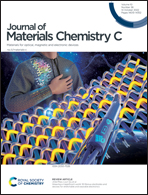A review of inkjet printing technology for personalized-healthcare wearable devices
Abstract
Personalized healthcare (PHC) is a booming sector in the health science domain wherein researchers from diverse technical backgrounds are focusing on the need for remote human health monitoring. PHC employs wearable electronics, viz. group of sensors integrated on a flexible substrate, embedded in the clothes, or attached to the body via adhesive. PHC wearable flexible electronics (FE) offer numerous advantages including being versatile, comfortable, lightweight, flexible, and body conformable. However, finding the appropriate mass manufacturing technologies for these PHC devices is still a challenge. It needs an understanding of the physics, performance, and applications of printing technologies for PHC wearables, ink preparation, and bio-compatible device fabrication. Moreover, the detailed study of the operating principle, ink, and substrate materials of the printing technologies such as inkjet printing will help identify the opportunities and emerging challenges of applying them in manufacturing of PHC wearable devices. In this article, we attempt to bridge this gap by reviewing the printing technologies in the PHC domain, especially inkjet printing in depth. This article presents a brief review of the state-of-the-art wearable devices made by various printing methods and their applications in PHC. It focuses on the evaluation and application of these printing technologies for PHC wearable FE devices, along with advancements in ink preparation and bio-compatible device fabrication. The performance of inkjet, screen, gravure, and flexography printing, as well as the inks and substrates, are comparatively analyzed to aid PHC wearable sensor design, research, fabrication, and mass manufacturing. Moreover, it identifies the application of the emerging mass-customizable printing technologies, such as inkjet printing, in the manufacturing of PHC wearable devices, and reviews the printing principles, drop generation mechanisms, ink formulations, ink-substrate interactions, and matching strategies for printing wearable devices on stretchable substrates. Four surface matching strategies are extracted from literature for the guidance of inkjet printing of PHC stretchable electronics. The electro-mechanical performance of the PHC FE devices printed using four surface matching strategies is comparatively evaluated. Further, the article extends its review by describing the scalable integration of PHC devices and finally presents the future directions of research in printing technologies for PHC wearable devices.



 Please wait while we load your content...
Please wait while we load your content...